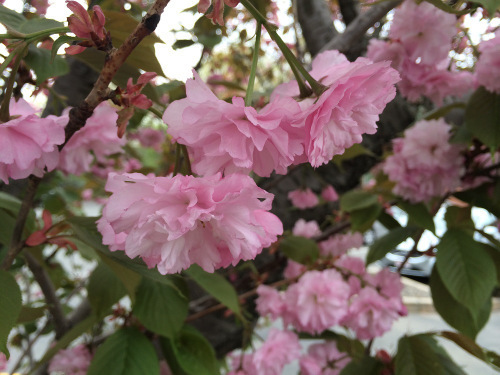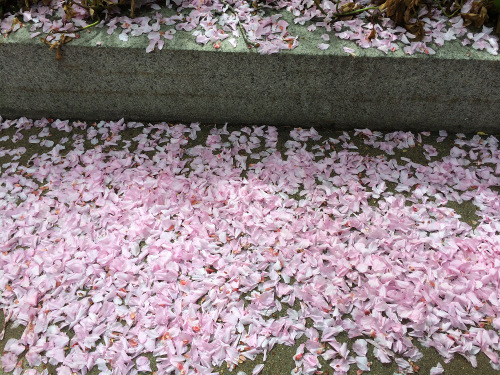Doing Pretty
I was thinking about what I would someday say to my daughter about being pretty. She’s not concerned with pretty now: she’s only ten, and focused on designing her own Magic the Gathering cards. She has read all of Harry Potter and Percy Jackson. She watches Cosmos and asks questions about theoretical physics. But someday, she will be, because most of us get there, to where we think about pretty. Am I pretty? What is pretty anyway? I remember thinking about those things when I was twelve. (And of course not feeling pretty, because who does at twelve?)
And I though, this is what I would tell her:
Pretty isn’t something you are. It’s something you do. Pretty, as has been pointed out, is a set of skills. It’s being attractive, but in a particular way: the way our culture has coded specifically female (so there is something culturally dubious about a pretty man). As you know, I’m an academic, so when I write this, I write it thinking of a class I took on aesthetic theory when I was working on my master’s degree. There is a book called A Philosophical Enquiry into the Origin of Our Ideas of the Sublime and Beautiful by Edmund Burke in which he defines the beautiful as soft, delicate, attractive. The sublime is defined as hard, large, threatening. The rolling hills of England are beautiful. The Swiss Alps are sublime. Guess which one he associates with men, and which with women . . .
My point is, what Burke describes as the beautiful is actually the pretty. (He got it wrong. Sorry, Edmund, but you did.) The pretty is kittens and Queen Anne furniture and petit fours. It is daisies in the grass and the Lake District. Lace curtains. Antique roses. A bicycle painted sky blue. The sea can be deceptively pretty . . . Because the pretty is soft and feminine, we denigrate it. But imagine a world in which everything was beautiful or sublime. I think it would give us headaches. There is a value to pretty. Among other things, it’s restful, comfortable.
But what about the pretty associated with people? I think people can “be” pretty, but it’s really by doing pretty . . . because pretty is a cultural value, a cultural construct. We make ourselves pretty. Only babies are naturally pretty, for the same reason kittens are: we are drawn to what is young because evolution, because those who loved and protected their young survived. For adult women, who are the ones traditionally expected to be, or perform, pretty, it’s a matter of dress and manner, of makeup and attitude. It’s only on the surface. There’s nothing necessarily wrong with that: lots of things are only on the surface, and nevertheless real. My central point here is that pretty is a performance. That’s why I called this blog post “doing pretty.” And I would say to my daughter,
1. Anyone can do pretty. Including men.
2. No one has to do pretty, or owes pretty to anyone else.
You can choose not to be pretty. You can choose, instead, to be beautiful, or sublime, or create your own aesthetic category, your own way of being. Or you can choose to be pretty on Monday, and sublime on Tuesday, and spend Wednesday in bed.
But pretty isn’t something you either are or are not. Pretty is a set of skills. Some of the prettiest people I’ve ever seen are male models. They know how to do pretty.
The other thing I would say is, don’t be deceived by pretty. It’s easy to assume that the pretty is also the powerless, but that’s not true. Some of the smartest people I’ve known have been delicate, feminine women who, partly because they have been underestimated and overlooked, have simply gone ahead and done whatever they wanted to. Pretty can be a useful disguise. It can reassure people, make them comfortable, convince them that you’re conforming to social ideals, while all the time you’re having revolutionary thoughts, making unconventional art. A stream is pretty, but it wears away stone . . .
Finally, I would say, don’t confuse the pretty with the beautiful. The beautiful is attractive as well, but it has something that pretty doesn’t have: a depth, a darkness. Pretty is the rose. Beautiful is the rose with its thorns, the caterpillars that eat its leaves, its roots going down into the ground. The beautiful is both surface and depth: it is necessarily associated with, infused with, death. Beauty is not a performance but a way of being.
If you want to be pretty, learn to do pretty. There is nothing wrong with that. If you want to be beautiful, you have to become beautiful . . . it’s a process of transformation. It involves observing the beauty of the natural world and human art, immersing yourself in it, becoming the sort of person who has insight, wisdom, and compassion. Often, it involves producing beauty. Georgia O’Keefe was beautiful: the angular bones of her face remind me of a bird. She looks as though she is always about to take flight. Unlike the pretty, the beautiful does not comfort or reassure us. It often disquiets, discomforts us. The sublime, by contrast, awes and overwhelms us.
A pretty wood makes us want to take a walk. A sublime wood, like a forest of redwoods, reminds us of our smallness in the scheme of things. A beautiful wood makes us wonder if it is haunted by fairies. If I were putting together an aesthetic theory, I would distinguish between these three categories.
Don’t knock pretty. Sometimes we just want to take a walk in the woods . . .
But to the question “Am I pretty,” I would answer, pretty is a performance, a social act. You can do pretty (anyone can do pretty). You don’t have to do pretty. It’s completely up to you . . .
(Cherry blossoms are pretty. But I have always found that when they’re falling, they become beautiful. It is the cherry blossoms suspended above the petals on the ground, and the petals on the ground like the rags of a ball gown, that become beautiful because they remind us of our own evanescence . . .)







